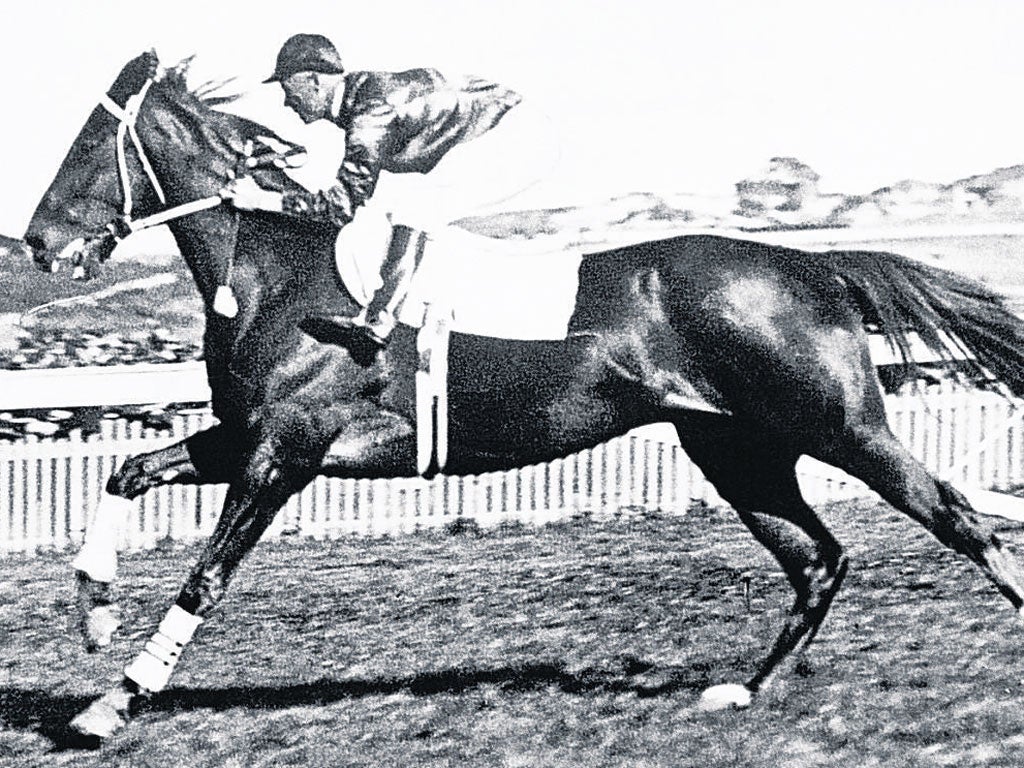Mafia linked to death of Australia's racing great
New evidence suggests trainer of Thirties thoroughbred Phar Lap did not poison him

Your support helps us to tell the story
From reproductive rights to climate change to Big Tech, The Independent is on the ground when the story is developing. Whether it's investigating the financials of Elon Musk's pro-Trump PAC or producing our latest documentary, 'The A Word', which shines a light on the American women fighting for reproductive rights, we know how important it is to parse out the facts from the messaging.
At such a critical moment in US history, we need reporters on the ground. Your donation allows us to keep sending journalists to speak to both sides of the story.
The Independent is trusted by Americans across the entire political spectrum. And unlike many other quality news outlets, we choose not to lock Americans out of our reporting and analysis with paywalls. We believe quality journalism should be available to everyone, paid for by those who can afford it.
Your support makes all the difference.As Australians prepare for a flutter on today's Melbourne Cup, the nation's biggest thoroughbred racing event, new evidence has emerged to support the theory that the country's most famous racehorse, Phar Lap, was poisoned by American gangsters.
Foul play has been suspected ever since the five-year-old chestnut gelding, who won Australian hearts during the Great Depression, died suddenly in 1932. Tests on hair follicles from his preserved hide in 2006 appeared to indicate that he had ingested a large quantity of arsenic in the hours before he collapsed.
It is not clear how the chemical got into Phar Lap's system, but the blame was attached to those closest to him two years later when a recipe book of "tonics" written by his trainers was discovered. The tonics, which contained small quantities of strychnine, belladonna, cocaine, coffee and arsenic, were typical of those given to racehorses in that era as stimulants.
Tommy Woodcock, Phar Lap's trusted trainer, has been accused by some of accidentally giving his charge an overdose. But in a recently uncovered article written by Woodcock, he claims he never administered tonics to the horse.
The article, which appeared in the Hobart newspaper The Mercury in 1936, has been unearthed by retired Australian physicist, Graeme Putt, the author of the 2009 book Phar Lap: The Untold Story. In the article, Woodcock wrote about the tonics, which the racehorse's part-owner and principal trainer, Harry Telford, urged him to administer.
"At first I used to argue that a horse like Phar Lap did not want a tonic, but as time went on I adopted tactics," he wrote. "To please Telford I would take the bottle, but would pour a quantity down the drain each day so he would think that I was carrying out his instructions."
Following Phar Lap's death, there were rumours American gangsters had poisoned him because they feared the gelding would upset their illegal gambling syndicates. "Big Red" had won 37 of his 51 races – including the 1930 Melbourne Cup.
After travelling back to the US, Phar Lap collapsed in his stable in San Francisco. Woodcock, a former jockey, found the horse in severe pain, with a high temperature, and a few hours later he died of internal bleeding. An autopsy found that his stomach and intestines were inflamed, which some took as evidence of poisoning.
Dr Putt speculates that Woodcock, who used to sleep in Phar Lap's stable, gave credence to the rumours of mafia involvement because "he was absolutely bereft that the horse had died on his watch ... maybe he was trying to divert blame from the handlers".
He doubts that arsenic was the cause of death, pointing to the autopsy's conclusion that levels of the chemical in Phar Lap's system were no higher than normal. The high levels detected in the hair follicles in 2006 could have been absorbed from grass sprayed with arsenate, a pesticide, Dr Putt said.
One veterinary scientist who has analysed the autopsy reports believes the horse died of a bacterial infection, anterior enteritis, which has only been known about since 1980.
While mystery still shrouds the cause of his death, the article by Woodcock makes one thing clear about one of Australia's most loved racehorses, according to Dr Putt. "Contrary to some stories, he was not on performance-enhancing drugs. Those drugs went down the sink."
Join our commenting forum
Join thought-provoking conversations, follow other Independent readers and see their replies
Comments